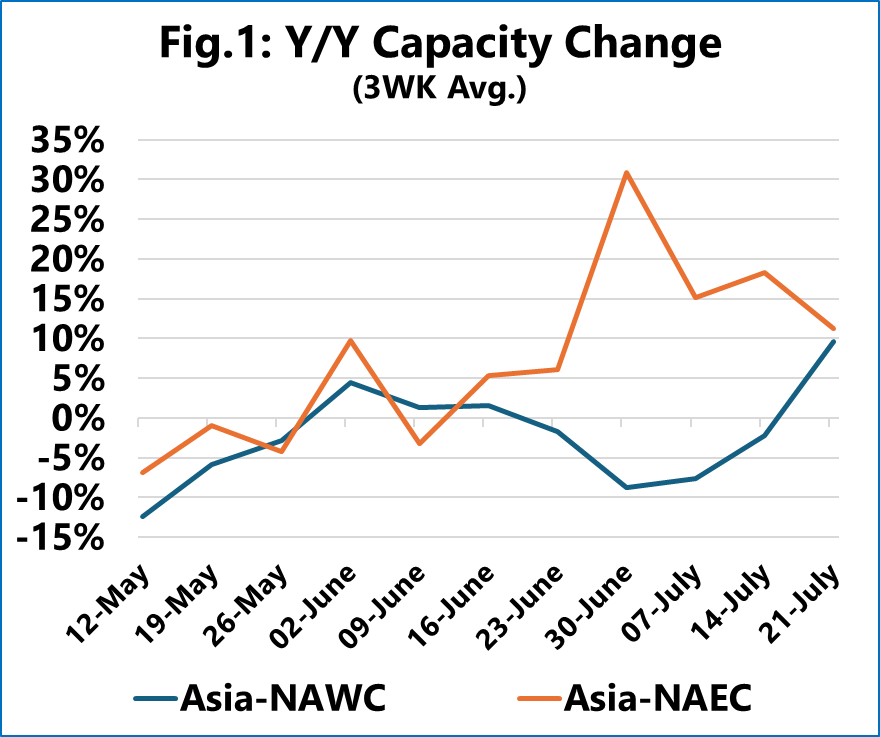Shipping lines are bracing for a sudden surge in Transpacific cargo demand following the unexpected 90-day tariff pause between the United States and China, raising concerns over capacity shortages and rising spot rates.
The tariff agreement, announced without prior warning, reduces U.S. duties on Chinese imports from 145% to a baseline 30%, while China has lowered its tariffs from 125% to 10%.

Source: Sea-Intelligence
Sea-Intelligence said in a new analysis that despite the partial relief, carriers had already cut capacity over the past four weeks in response to declining bookings over the past month, leaving them scrambling to ramp up operations before the August 14 cut-off.
"Shipping lines need to ramp capacity up quickly to accommodate an expected surge in bookings," said Alan Murphy, CEO of Sea-Intelligence.
"Getting cargo into the U.S. before the new August 14 cut-off requires peak season cargo to be shipped no later than mid-July."
The recent analysis found that capacity injections remain limited, particularly on the North America West Coast trade lane, where no meaningful increase has been observed. In contrast, the East Coast is seeing early signs of capacity growth, though it remains behind schedule.
"The West Coast only sees a meaningful increase from mid-July, whereas the East Coast sees significant capacity growth from end-June," Murphy noted. "But this is still very late for a capacity increase if there is an imminent surge of cargo from China."
The Danish container shipping research firm said the delayed response could lead to sharp spot rate increases and force carriers to reallocate vessels from other Asian export trades, potentially disrupting broader shipping networks.
With peak season cargo needing to move by mid-July to meet the tariff deadline, industry analysts warn that blank sailings and equipment shortages could further complicate supply chain stability in the coming weeks.
"This could lead to a sharp rise in spot rates, as well as much more capacity insertion into the Transpacific, at the expense of blank sailings in other Asian export trades," Murphy said.